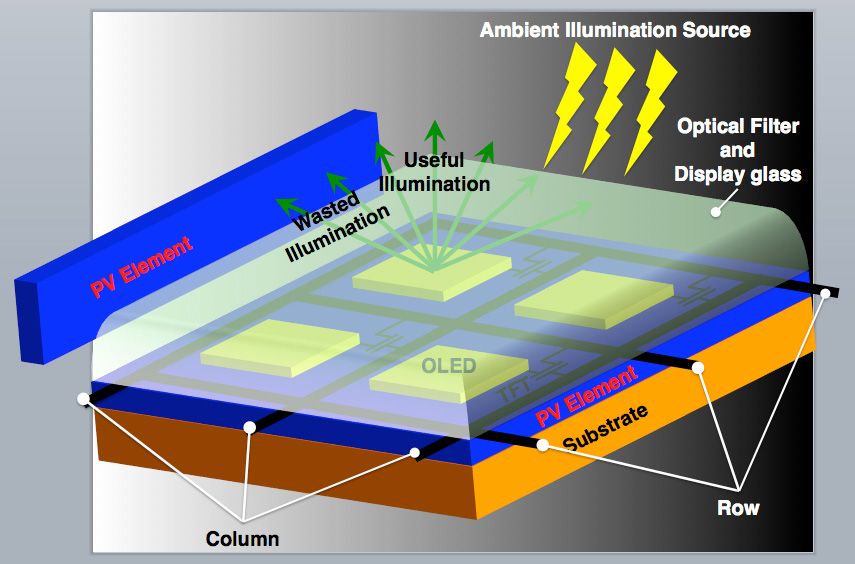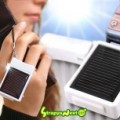Solar Cells in Smartphone Screens!

18 January 2012—Arman Ahnood, a researcher at the London Centre for Nanotechnology at University College London is working toward a simple goal: “We can have a mobile phone [that] requires charging less often,” Ahnood told a November session at the Materials Research Society’s fall meeting in Boston. It might soon be possible to go a week or more without charging a smartphone. And eventually, we might see a phone that never needs to be plugged in.

To extend the time between charges, the London group built a prototype device that converts ambient light into electricity using an array of solar cells made of thin-film hydrogenated amorphous silicon that’s designed to sit beneath the phone’s screen. The photovoltaic (PV) cell takes advantage of the smartphone display’s large footprint. In a typical organic light-emitting diode (OLED) display, only about 36 percent of the light generated is projected out of the front of the screen, says Ahnood. Much of it escapes at the edges of the OLED, where it is useless. So Ahnood and his colleagues set out to harness this wasted light by putting thin-film PV cells around the display’s edges as well.
Making the device work required sidestepping another problem: fluctuations in the voltage provided by the solar cell, which could have damaged the phone’s battery. The researchers designed a thin-film transistor circuit to smooth out voltage spikes and extract electricity more efficiently.
And instead of charging the battery directly, which would have involved adding complex circuitry, the London group included a thin-film supercapacitor for intermediate energy storage. This combination of photovoltaics, transistors, and supercapacitor yielded a system with an average efficiency of 11 percent and peak efficiency of 18 percent. If the PV array converts 5 percent of ambient light to electricity, the energy-harvesting system can generate as much as 165 microwatts per square centimeter under the right lighting conditions. For a typical 3.7-inch smartphone screen, that equates to a maximum power output of 5 milliwatts, “which is quite useful power,” says Ahnood, though that’s only a fraction of a smartphone’s power needs.
There are existing CMOS-based voltage regulators that offer higher efficiency, says Ahnood, but they aren’t compatible with the thin-film technology used in smartphone displays. Furthermore, Ahnood’s thin-film devices can be fabricated at temperatures below 150 °C on lightweight plastic, making them much more attractive for use in mobile phones, where every gram and every penny is a big deal.
The cellular handset prototype is just one example of such small-scale wirelessenergy harvesting. Another plug-free power source might be magnetic resonance coupling via an induction coil. Alternating current is run through a coil of conductive material, generating an oscillating magnetic field. That field, in turn, generates a current in a coil embedded in, say, a phone or an MP3 player.
Jun Yu, another researcher with the London Centre for Nanotechnology, told scientists at a separate session of the MRS meeting that the team had designed a flat thin-film coil that could be used as a receiver in a display. It was initially conceived for larger displays, such as those in desktop computers, Yu says. But he doesn’t foresee the coil producing enough power to run an entire computer. “A computer has a lot of components, so it requires a lot of power,” he says. It should, however, be possible to scale down the magnetic coupling scheme for use in mobile devices.
Ahnood says it will take quite a bit more research to get from prototype to consumer product, but the London researchers are exploring different circuit designs and materials with the aim of increasing the energy harvesting system’s efficiency.
Via IEEE
Trackback from your site.



